Alternate guitar tunings are basically anything that deviates from the standard EADGBE tuning for the open strings. Regardless of whether we change just one or several strings, any alternate tuning greatly affects the sound and chord fingerings. We’ve picked out 10 alternate tunings, along with the recommended strings for electric guitars!
You are currently viewing a placeholder content from YouTube. To access the actual content, click the button below. Please note that doing so will share data with third-party providers.
There are many reasons for alternate Tunings: For example, lowering the E-string can help generate a solid bass foundation. Moreover, special chords that can involve huge finger stretches in standard tuning are sometimes easier to achieve in an alternate tuning. Last but not least, changing up the tuning can also give your creativity a real boost! As you can no longer rely on familiar fingerings, you have to go search for interesting chords yourself!
1. Drop D tuning (DADGBE)
You are currently viewing a placeholder content from YouTube. To access the actual content, click the button below. Please note that doing so will share data with third-party providers.
Some of you have probably already used this tuning. Tuning the low E string down a whole step is a common technique from metal to classical guitar. The obvious advantage is a much more powerful bass range. In addition, it allows you to easily play power chords on the lower three strings using barre chords. Famous examples would be “Killing in the Name of” by RATM or “Red Flag” by Billy Talent. To compensate for the lower string tension of the low E string, I recommend choosing a higher string gauge. If you normally play a .010-.046 set, try a .048 gauge for the E-string.

2. Drop C tuning (CGCFAD)
You are currently viewing a placeholder content from YouTube. To access the actual content, click the button below. Please note that doing so will share data with third-party providers.
Drop C tuning is basically a slight variation of drop D tuning. You tune the entire guitar down a whole step and then drop the low E string by another whole step down to C. This gives you these notes for your open strings: CGCFAD. With this tuning, you’re getting close to the sound of a seven-string guitar! Some examples of songs in drop C are “Chop Suey!” by System of a Down or “Hand of Blood” by Bullet for my Valentine. Ernie Ball offers the appropriate string gauges for this. There are also special guitar models that are perfect for Drop C!

3. Double Drop D tuning (DADGBD)
You are currently viewing a placeholder content from YouTube. To access the actual content, click the button below. Please note that doing so will share data with third-party providers.
Double drop D is a drop D tuning in which the high E string is also tuned to D. One of the most famous examples of this alternate tuning is “Cinnamon Girl” by Neil Young. With a regular .010-.046 set, it’s best to go to a .011 gauge for the high E string.
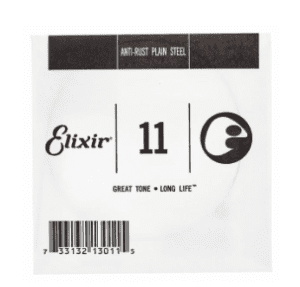
4. DADGAD (Celtic) tuning
You are currently viewing a placeholder content from YouTube. To access the actual content, click the button below. Please note that doing so will share data with third-party providers.
DADGAD, also known as Celtic tuning, is a very popular alternate tuning in Irish folk music. It differs from double drop D only in that the B string is tuned to A. The best-known example is probably “Kashmir” by Led Zeppelin. As for the strings, the same idea applies as with the other drop tunings: choose a slightly higher gauge for a string that is tuned a whole step lower!
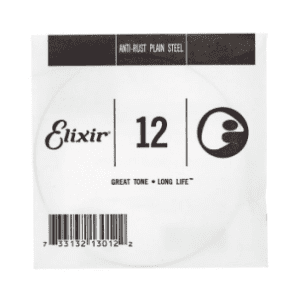
5. Nashville tuning (E’A’D’G’BE)
You are currently viewing a placeholder content from YouTube. To access the actual content, click the button below. Please note that doing so will share data with third-party providers.
Nashville tuning originated in a popular trick that was often used on acoustic guitars in the Nashville studio scene. Here, the highest two strings are tuned in standard tuning and the lower four strings are tuned up an octave. Layering a regular guitar with another one in Nashville tuning creates a beautiful 12-string effect. This alternate tuning can be heard clearly in “Dust in the Wind” by Kansas, for example. A typical Nashville string set consists of the following gauges, starting from the high E string: .010, .014, .009, .012, and .018.
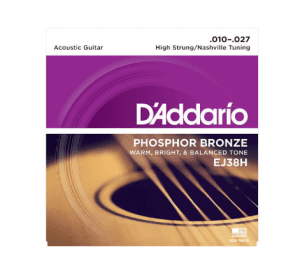
6. Open E tuning (EBEG#BE)
You are currently viewing a placeholder content from YouTube. To access the actual content, click the button below. Please note that doing so will share data with third-party providers.
Open tuning means that the open strings are tuned like a major chord. In the case of open E tuning, this gives us: EBEG#BE. Open E is especially popular with blues and slide players, but Joni Mitchell’s “Big Yellow Taxi” also uses this tuning. While you can leave your string gauges as they are, I personally prefer to go one size lower for the A and D strings, i.e. .034 and .024 for an otherwise regular .010 set.
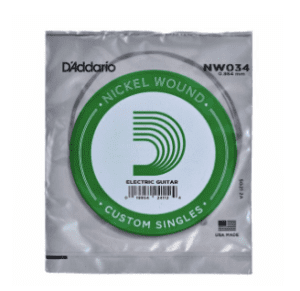

7. Open G tuning (DGDGBD)
You are currently viewing a placeholder content from YouTube. To access the actual content, click the button below. Please note that doing so will share data with third-party providers.
In open G tuning, the open strings are tuned like a G major chord with the notes DGDGBD.
Open G became very popular due to its beautiful basic sound, but also its relaxed string tension. This alternate tuning was made famous by Keith Richards, who used it to play some Rolling Stones hits such as “Honky Tonk Women”. Here too, I would switch to a slightly thicker set of strings.
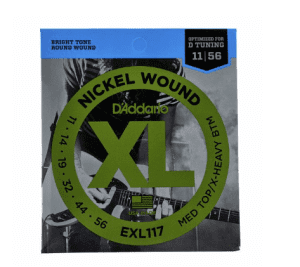
8. CGCFCE (Nick Drake) tuning
You are currently viewing a placeholder content from YouTube. To access the actual content, click the button below. Please note that doing so will share data with third-party providers.
This tuning, named after the British folk artist Nick Drake, delivers a very open, airy sound. If you play the open strings, you get a Cadd11 chord that is extremely full-bodied thanks to the low C string. Nick Drake used this tuning in many of his songs, such as “Hazey Jane I” or “Pink Moon”. This tuning is difficult to achieve with just one set of strings. That’s why we recommend using your standard gauges for the high B and E strings and a down-tuning set for the lowest four strings:

9. DGCGCD (Rain Song) tuning
You are currently viewing a placeholder content from YouTube. To access the actual content, click the button below. Please note that doing so will share data with third-party providers.
Jimmy Page plays an extremely rare tuning on Led Zeppelin’s “Rain Song”. As with DADGAD, you get a sus4 sound, but this time based on a Gsus4 with a D in the bass. Here, too, We’d recommend a classic down-tuning set to account for the lower string tension.
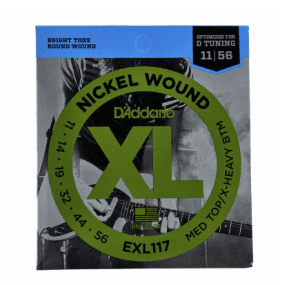
10. GABDEG tuning
You are currently viewing a placeholder content from YouTube. To access the actual content, click the button below. Please note that doing so will share data with third-party providers.
This very unusual tuning was made famous mainly by Sonic Youth guitarist Thurston Moore. The sound can be heard on songs such as “Teenage Riot” or “Sugar Cane”. For this alternate tuning, Moore uses a custom set of strings consisting of the gauges .046, .038, .036, .022, .017, and .014.
You can either order these strings individually or combine a .008 and .010 set!
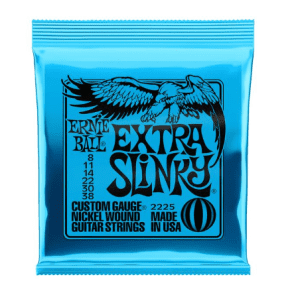

You are currently viewing a placeholder content from YouTube. To access the actual content, click the button below. Please note that doing so will share data with third-party providers.
Alternate Tunings: Your Feedback
Do you have any experience with alternate tunings? Which one is your favourite? Let us know in the comments!















Comments 0
No comments yet.